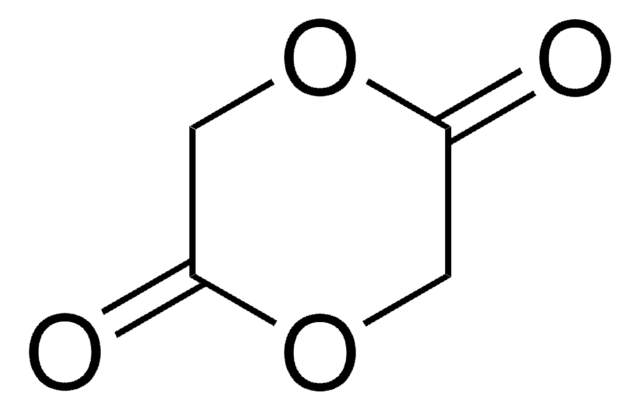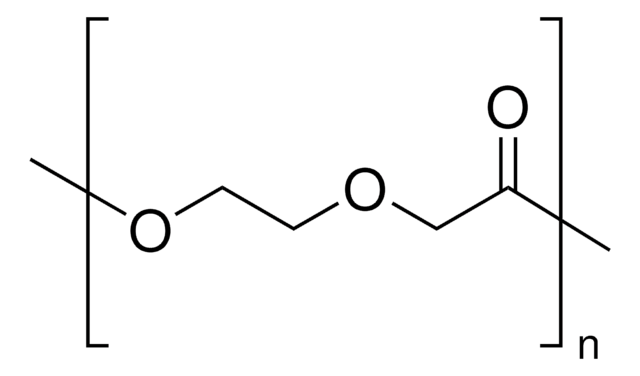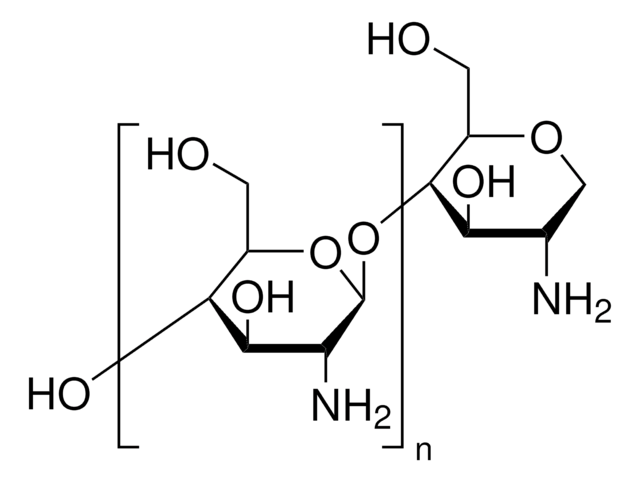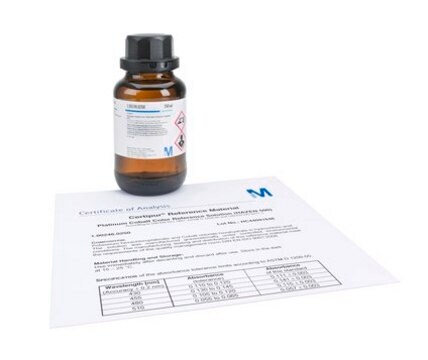46746
Polyglycolic acid
Synonyme(s) :
PGA, Poly(2-hydroxyacetic acid)
Se connecterpour consulter vos tarifs contractuels et ceux de votre entreprise/organisme
About This Item
Produits recommandés
Description
inherent viscosity 1.2 dl/g
InChI
1S/C2H4O3/c3-1-2(4)5/h3H,1H2,(H,4,5)
Clé InChI
AEMRFAOFKBGASW-UHFFFAOYSA-N
Application
medical device
Code de la classe de stockage
11 - Combustible Solids
Classe de danger pour l'eau (WGK)
WGK 3
Point d'éclair (°F)
Not applicable
Point d'éclair (°C)
Not applicable
Équipement de protection individuelle
Eyeshields, Gloves, type N95 (US)
Faites votre choix parmi les versions les plus récentes :
Déjà en possession de ce produit ?
Retrouvez la documentation relative aux produits que vous avez récemment achetés dans la Bibliothèque de documents.
Les clients ont également consulté
Mitsuhiro Enjo et al.
Plastic and reconstructive surgery, 131(3), 335e-342e (2013-03-01)
Approaches to auricular reconstruction have shown improved outcome when a basic fibroblast growth factor (bFGF) slow-release system and fibrin spraying are combined with biodegradable polymers. More complex, three-dimensional structures, such as those that replicate the human auricle, are often lost
Rodney A Rosalia et al.
Cancer immunology, immunotherapy : CII, 62(7), 1161-1173 (2013-04-25)
Protein antigen (Ag)-based immunotherapies have the advantage to induce T cells with a potentially broad repertoire of specificities. However, soluble protein Ag is generally poorly cross-presented in MHC class I molecules and not efficient in inducing robust cytotoxic CD8(+) T
Steven Lotz et al.
PloS one, 8(2), e56289-e56289 (2013-02-26)
An essential aspect of stem cell culture is the successful maintenance of the undifferentiated state. Many types of stem cells are FGF2 dependent, and pluripotent stem cells are maintained by replacing FGF2-containing media daily, while tissue-specific stem cells are typically
Hongfen Wei et al.
PloS one, 8(3), e58133-e58133 (2013-03-08)
The distribution of targeted nanoparticles in tumor tissue is affected by a combination of various factors such as the physicochemical properties of the nanoparticles, tumor hemoperfusion and tumor vascular permeability. In this study, the impact of the biological effects of
Richard G Payne et al.
Methods in molecular biology (Clifton, N.J.), 1001, 167-177 (2013-03-16)
This chapter describes the fabrication of a polyglycolic acid (PGA)-based scaffold used to tissue engineer a Neo-Urinary Conduit™.
Articles
Interest in utilizing biodegradable polymers for biomedical applications has grown since the 1960s.
Notre équipe de scientifiques dispose d'une expérience dans tous les secteurs de la recherche, notamment en sciences de la vie, science des matériaux, synthèse chimique, chromatographie, analyse et dans de nombreux autres domaines..
Contacter notre Service technique












![Poly[(R)-3-hydroxybutyric acid] natural origin](/deepweb/assets/sigmaaldrich/product/structures/129/476/7d1c924b-f644-4889-a2d6-d7a923ce382c/640/7d1c924b-f644-4889-a2d6-d7a923ce382c.png)